Today, everyone and everything is a part of the digital revolution. Even the smallest technology is labeled “game-changing” or “next-level.”
As such, you never really know which technologies are actually useful and will help you transform customer experiences and which ones are simply a fad.
If you’re struggling with the same questions, this article is for you. Here, we’re discussing the top 10 innovative technologies to help you transform customer experience in 2024.
No fads, no gimmicks – just clear examples. Dig in to discover the technologies you need to incorporate into your customer acquisition and experience strategy.
1. Predictive analytics
Predictive analytics is a mighty tool that helps you with tasks like churn prediction, lead scoring, customer segmentation, finding up-selling/cross-selling opportunities, and more. It tells you all the need-to-know information that’ll help you streamline your business operations.
Simply put, if you need to create a strategy to elevate customer experiences, you’ll need to know the following:
- Which audiences to target
- At which stage to upsell
- What messaging to use
That’s where predictive analytics comes in. Other than these basic activities, some advanced predictive analytics tools also:
- Predict the actions customers are likely to take on your site and social media pages
- Help marketers understand which content topics will work well
- Help users predict conversion rates
- Help users with next-best-action
For example, companies like Dash Hudson use predictive analytics to identify which type of content pieces will work the best on social media (they usually provide a score between 1–10).

2. Personalization algorithms
We’ve often seen emails from brands we love with the statement, “Based on your past purchases, we think you’d like these recommendations.” That’s a prime example of personalization algorithms put to work.
Brands use this technology to provide relevant recommendations to users to help them convert and improve their experiences.
For example, Hims, a brand that provides hair, health, wellness, and sexual health solutions, often employs personalization algorithms to tailor product recommendations and treatment plans based on individual health and wellness needs.
To offer customized solutions, these algorithms consider customer data, preferences, and medical history.

3. Augmented and virtual reality
Augmented reality (AR), virtual reality (VR), and the metaverse are all immersive technologies often used to improve customer experiences.
For example, in the past few years, companies like Jimmy Johns have used the metaverse to create interactive experiences for their customers by inviting them to create customized sandwiches online.
The event participants even got a voucher they could use in real life, and the best sandwiches were featured in Jimmy John’s real-life menu.
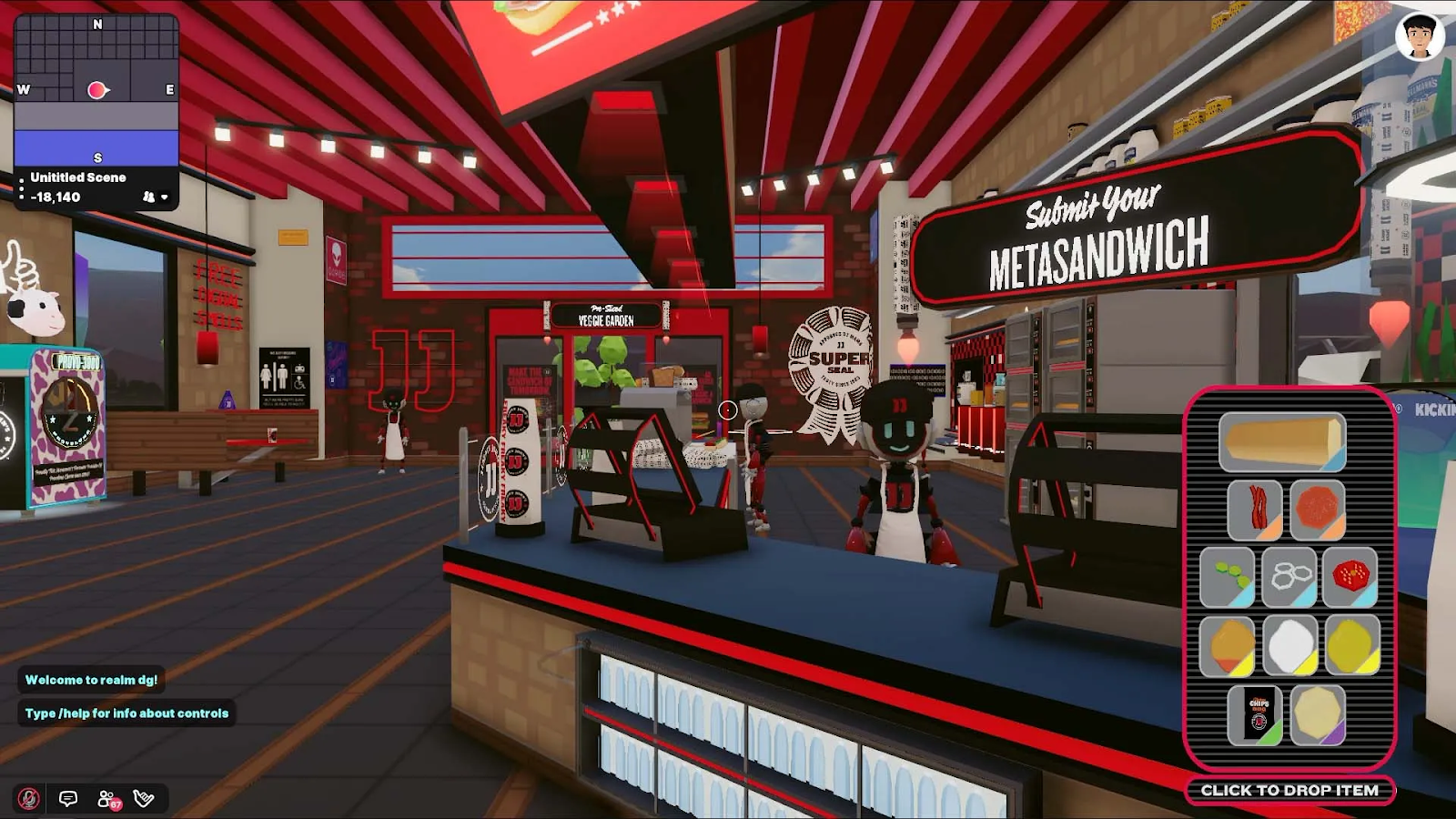
In fact, in the past few years, companies have even incorporated AR, VR, and QR features into digital business cards to provide more engagng and interactive experiences.
For example, customers can scan a QR code on a digital business card to access a virtual showroom, view product demos, or even engage in real-time video consultations.
4. Magic links
Magic links are another wonder of technology transforming customer experiences in 2024.
They (magic links) are a method of passwordless authentication that allows users to access websites without typing a password or using an app by simply clicking on a link sent directly to their email address.
They provide an improved user experience and robust security, as they are unique, one-time-use URLs that can’t be reused or stolen.
Another benefit they offer is they can leverage the security of the user’s email provider, which may have additional protections such as multi-factor authentication.
One popular example of magic link usage is the links you get for Slack sign-ins.
5. Self-service options
We all know customers hate getting on the phone to talk to support representatives to solve a query — so what can we do in this situation to make their experience easier and more seamless?
The answer is simple. We create self-service options for them, such as training videos, knowledge bases, help centers, FAQs, interactive guides, community forums, and more.
For inspiration, just consider the number of self-service options companies like Adobe provide.

Self-service options help improve your customers’ experiences, but they also help you save money on customer support. That way, your support teams can easily direct your customers to guides, tutorials, and videos whenever they have a query.
6. Social media listening tools
Social media listening tools like Sprout Social, Keyhole, Hootsuite, etc., help you analyze social media conversations about your brand.
Simply, this means you can easily tap into conversations around your company, industry, topics, and competitors. It’s a simple way to find out the sentiments around your brand and your work.
You can revise your marketing and PR strategies with such data and improve customer experiences. Moreover, you can even respond to customers when they mention you/your brand.
For example, companies like Black Girl Sunscreen use social listening tools to respond to tweets/conversations relevant to them.
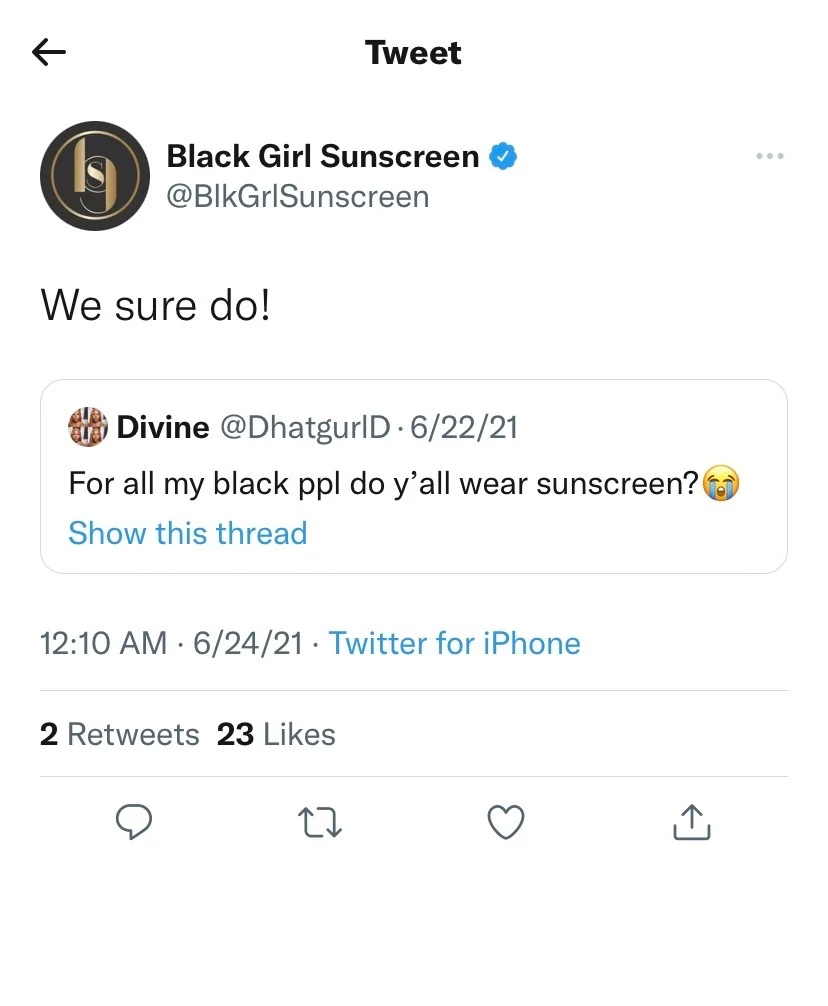
7. Generative AI
In the past year, the words generative AI have taken over the internet like a storm, especially with OpenAI launching ChatGPT. So, how can generative AI tools help your business, specifically when it comes to improving customer experiences?
You can use them to:
- Provide consistent experiences to customers in terms of keeping the same tone/style (human conversation styles might differ, but you can instruct your AI and set rules to ensure AI follows your style guide).
- Improve search quality (think something like Bing Chat).
- Help customers solve queries (e.g., a generative AI-powered chatbot).
- Pull the common data/themes to determine how to improve customer experiences.
- Tell customers about your product options and sales channels.
- Provide contextual and interactive product demos.
- Keep track of customer interactions.

8. BNPL models
BNPL models, also known as “Buy now, Pay later” models, are now on the rise due to customer focus on lifestyle and increasing demand for payment flexibility. These are EMI-type structures where you can pay for your product in installments.
At the end of the day, they help improve your customer experiences (because they’re convenient to use, consider multiple persons’ lifestyle choices and financial capabilities, and help improve the shopping experience). They also help you increase your sales.
Safe to say, if you offer a convenient payment model for your customers, it’ll also motivate them enough to purchase the product.
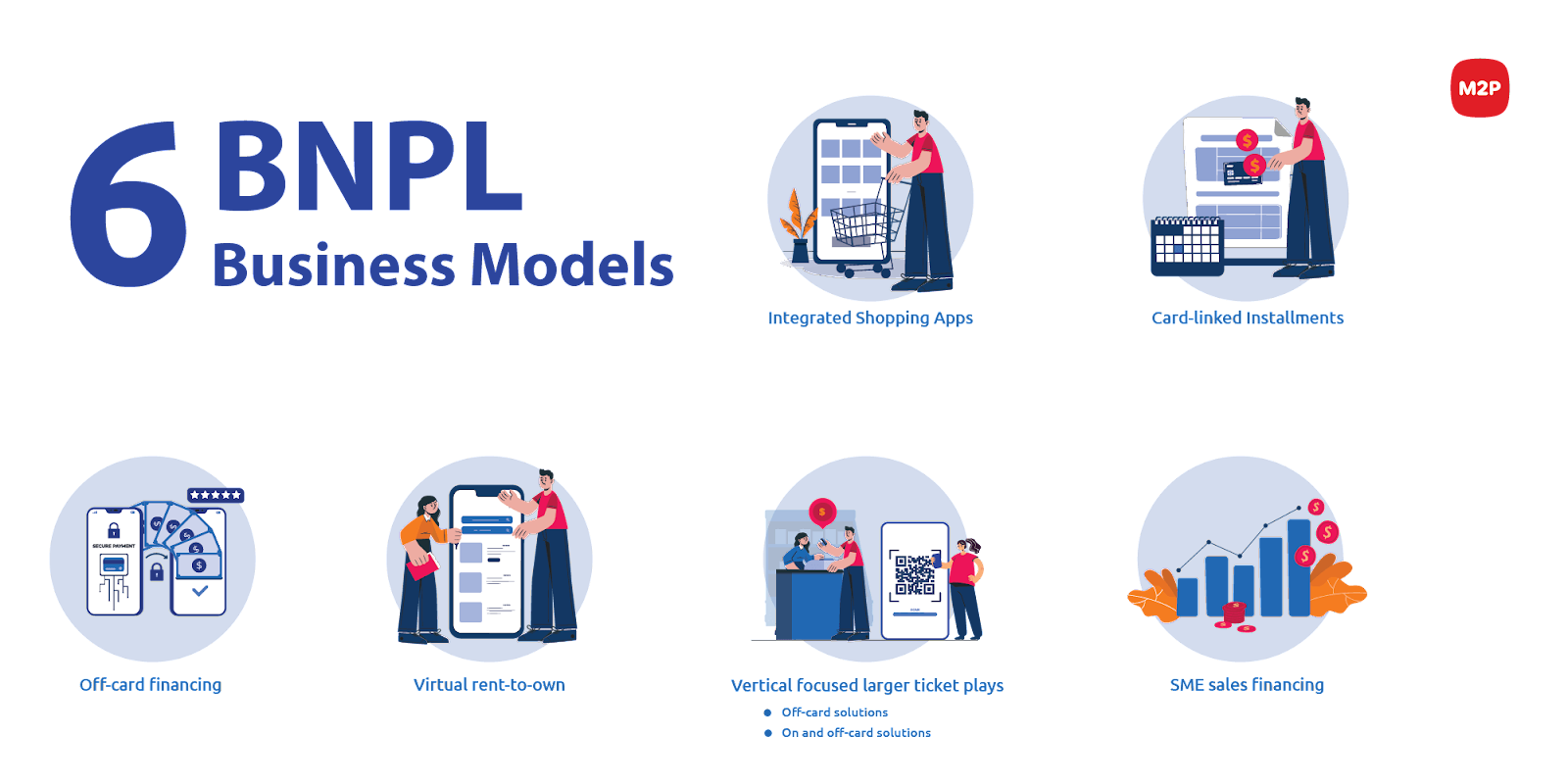
9. Voice commerce
Voice commerce has been around for a while, with brands like Microsoft (Cortana), Amazon (Alexa), and Apple (Siri) actively engaging in it. However, in recent years, voice commerce has stepped up a notch and reached the level of “conversational commerce.”
Brands are now optimizing SEO searches with long-tail keywords to improve the search and shopping experiences of people using voice assistants to search for stuff and add things to their carts.
This kind of technology is particularly helpful since people have started commuting back to the office after the COVID-19 pandemic and can use their commute time to add products to their grocery lists, reminders to their calendars, and other tasks.
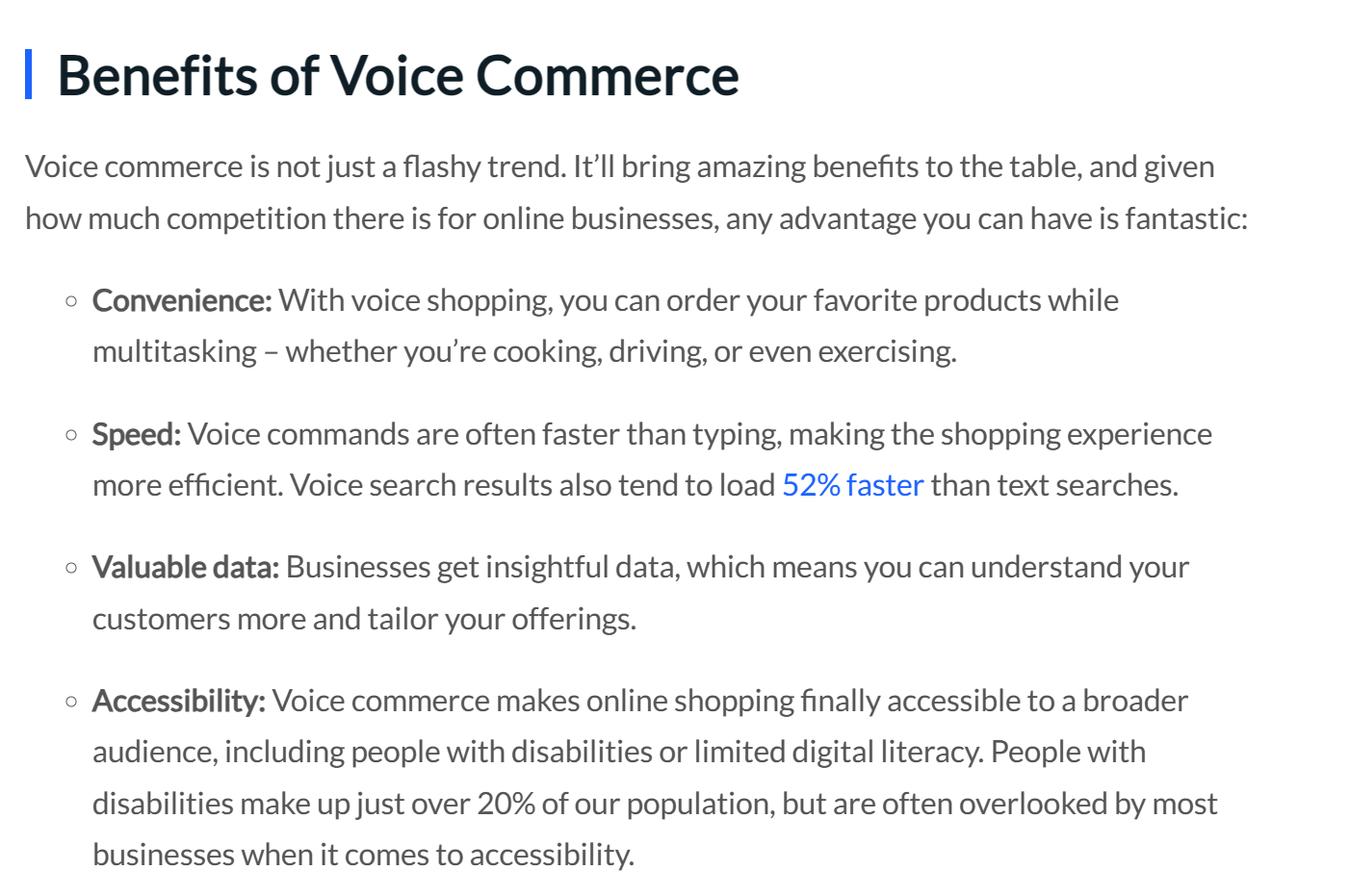
10. Conversational UX
Conversational UX (user experience) is just one step ahead of generative AI and voice commerce. It combines text, voice, app UI, and images to provide the most cohesive and immersive experiences to your customers.
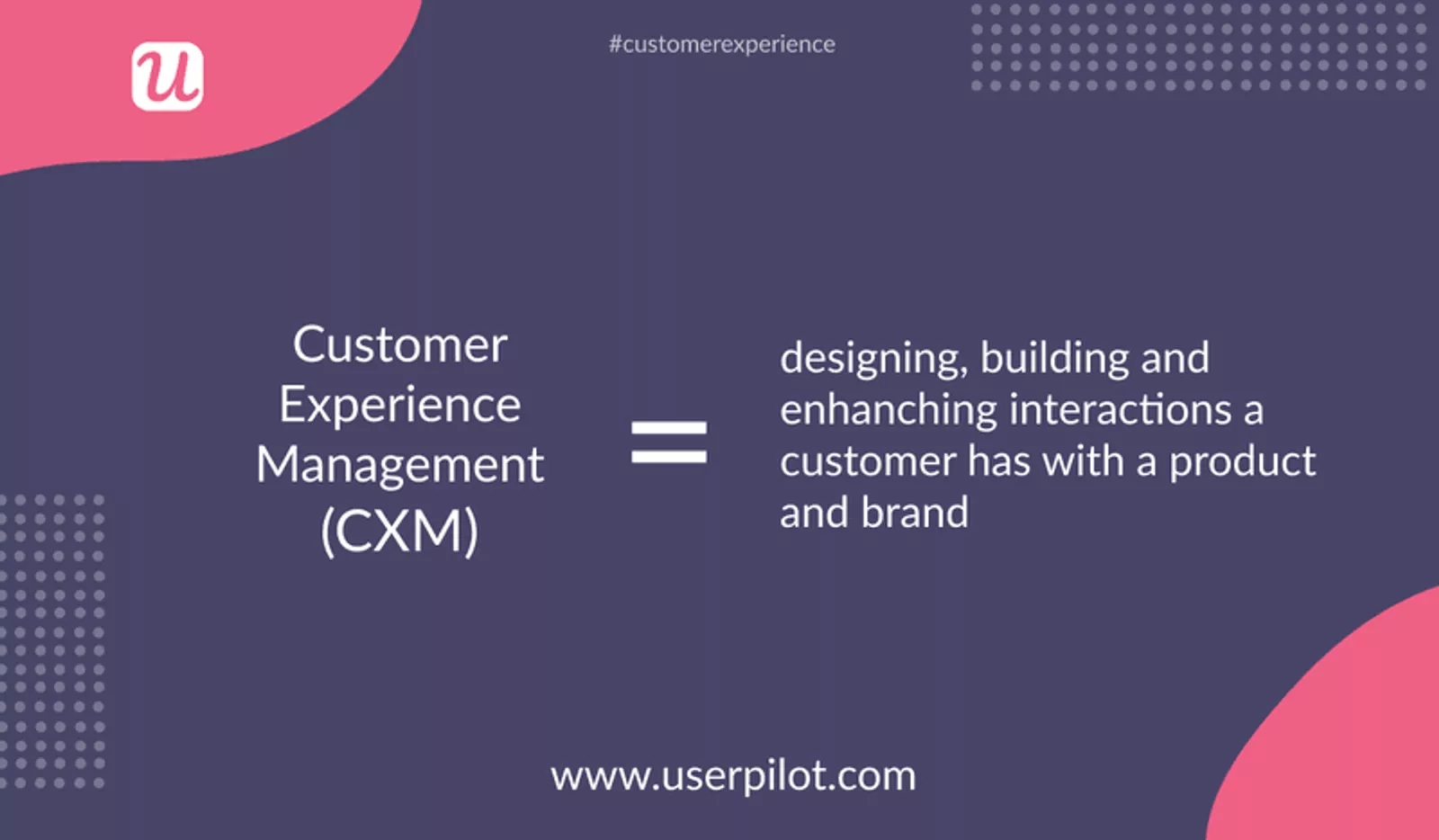
For example, consider being on an app, and you can:
- Complete quizzes to find personalized recommendations
- Send a question through voice and find relevant answers
- Interact with chatbots to find the answers you need
- Engage in interactive product videos
That’s a classic example of conversational UX and can help improve your customer experiences tenfold. Moreover, aside from improved experiences, it can also help:
- Reduce investment spent on customer support
- Increase engagement rates
- Improve support efficiency
- Reduce bounce rates
- Drive conversions
Leverage information to create the best customer experiences
Truth be told, the path to creating the best experiences for your customers is a tough one, and you always need to learn, relearn, and unlearn to provide them with experiences they want to engage in.
While we hope this list was helpful, we believe you need to consume more data, trends, and insights to understand how to improve customer experiences consistently and for the longer term.



